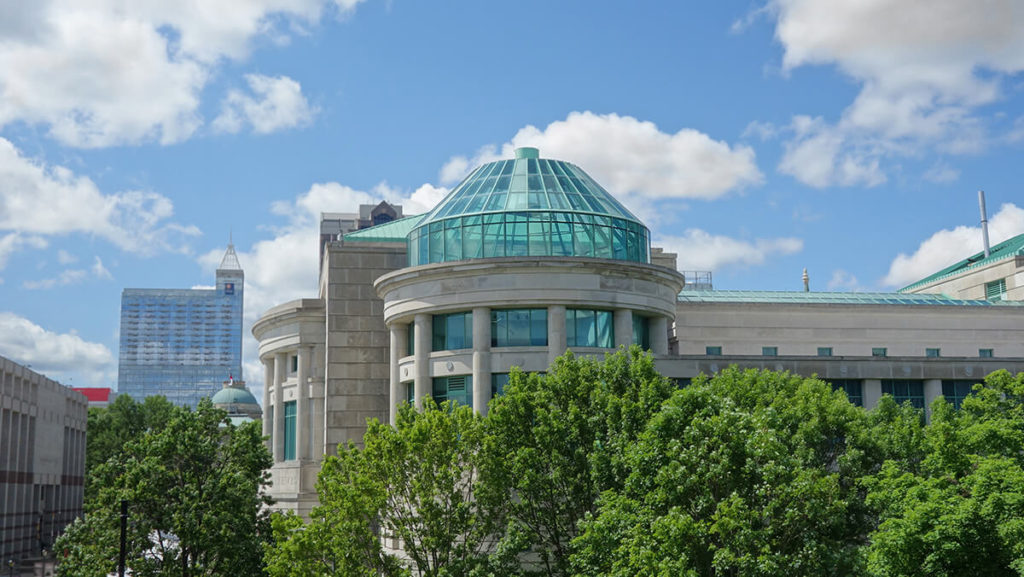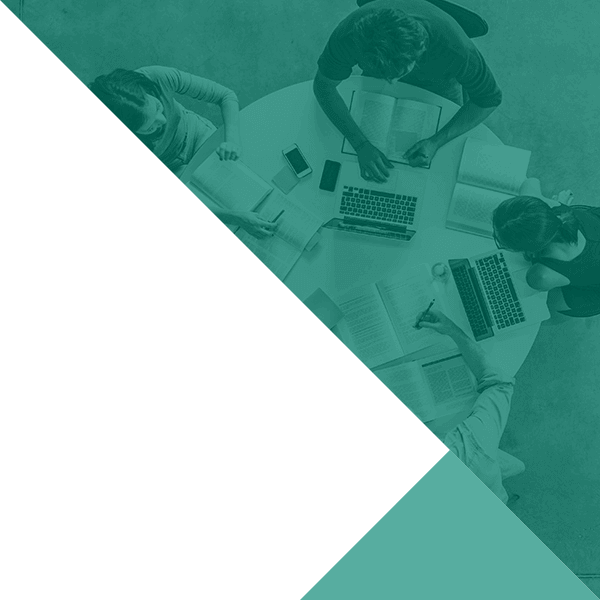1.0 Partnership Overview
The Museum of Life and Science is a science center in Durham, North Carolina that features a butterfly conservatory and large campus with extensive outdoor exhibits. The North Carolina Museum of Natural Sciences is located in downtown Raleigh, and is North Carolina’s most visited museum. The museum is focused largely on the flora, fauna and geology of the region. Duke University is a private R1 research university in Durham, North Carolina.
2.0 Reflections from the Partnership
In what ways did the partnership change the way you think about your own organization’s approach to BI or BI support? In what ways did individual PIs learn or improve their practice? How did you or your organization learn or improve your BI practice?
(Duke University) As the university representative in this partnership, the BID project really forced me to follow through with something that I’ve intended to do for a long time, but had never found the time to prioritize, and that was to formalize the relationships I had with my two museum partners. The nature of my interactions with the two other members of my partnership, and with the museums they represent, had always been informal, and largely based on personal relationships/friendships. To illustrate what I mean, and how the relationships have evolved, prior to BID I might have said the following to a PI: “If you want to consider addressing your BI by working with a museum, I could send an email to my contacts at NCMNS and at MLS and introduce you, and you can see what might be possible.” Now, a more likely conversation might be: “Your BI ideas would work well in a museum context, and we (Duke) actually have established BI partnerships with both the NC Museum of Natural Sciences in Raleigh and the Museum of Life + Science in Durham. I’ll connect you with my partners there so you can explore some options.”
(NCMNS) Participating in the BID project brought the topic of BI into focus for our museum. Previous to our participation, university researchers would approach individual staff members to explore BI possibilities on an ad hoc basis. Our museum has since shifted most of the initial contacts from the universities to our grants division. This assures that there is a central office overseeing that grant requirements are satisfied etc. The process for BI planning has not been streamlined or given structure within the museum. This is an essential piece of the puzzle that is necessary for the establishment of a robust internal process for how BI can be incorporated into Museum offerings.
(MLS) It’s been extremely helpful to have perspectives from such different organizations - my partners and I work at very different places in terms of scope and scale, and this project has helped me better understand how to “speak the language” of various actors I meet or interact with in the BI realm, and how to better meet them where they are. Leveraging tools, and the partnerships established in this project, has helped build some legitimacy and mutual trust between our organization and the PIs, who previously often acted as though we didn’t or don’t know what we were doing or talking about. It has helped me better understand what it actually is that we have to offer, where we have opportunity to grow, and where we might defer work to other organizations that have better infrastructure.
How have you worked to understand each other? When did you struggle or fail to understand one another? How did you navigate the culture and language code-switching necessary to work across organizations? How did you establish clarity around goals, timelines and roles? How did you build trust within the partnership?
(Duke University) One of the things I clarified early in the BID partnership was that, as the university representative, my work in BI support at Duke is a “part-time gig”, as it is one of several different hats I wear. (And as a faculty member, my BI support efforts are typically forced to take a back seat to my teaching, student advising/mentoring, scholarship, etc.). I can’t possibly consult with every Duke PI who is writing in NSF grant, or even the majority of them, and I feel strongly that it is important that I not be a bottleneck to Duke PIs working successfully with the two museums. All three of us discussed the importance of Duke PIs being able to go directly to one/both of the museums and bypass me at times. Because I had existing relationships with my two museum partners prior to BI, I would say trust was already present. But, I believe it was strengthened in two main ways: (1) my museum partners saw that I did not feel threatened or territorial when Duke PIs went directly to them, rather than necessarily working through me all the time; and (2) I repeatedly saw that when Duke PIs went directly to my museum partners, they made the effort to inform the PIs that my office existed (my office is small enough and new enough that there are still plenty of PIs at Duke that don’t know about me, yet), and refer the PIs back to my office for future BI support.
Another thing we discussed is that not every Duke PI that comes to me for BI support/consulting is necessarily looking to do BI work in partnership with a museum. I feel that it was important to communicate that to my museum partners to avoid tension in instances where I might consult with a PI and then refer them to a potential BI partner that was not one of the two museums in the BID partnership.
(NCMNS) The various discussions and meetings I had with my partners gave me a better understanding of the strengths and differences between our institutions. We came to understand the challenges that each of us face when trying to communicate what we were learning through BID to others in our respective institutions. Within my museum, this project helped reveal staff responsibilities/roles that are necessary to make an internal BI planning process work. There are internal organizational changes that would need to happen within my museum in order to establish agreed upon timelines and goals. We would then be in a better position to communicate these to a potential research partner. I believe the other institutions are in similar situations as well.
(MLS) I’d heard before (and, if I’m being honest, experienced) that there were some irreconcilable differences between informal learning institutions and higher ed - this project helped me to dig deeper into that assumption and find that many of these were indeed reconcilable...with the right attitude. The relationship I now have with my partners at Duke and NCMNS is one built off of mutual respect and understanding, which I think had to come from a lot of intentional time trying to better understand our different motivations, limitations, and capacities - time that was often built into our meeting schedule. I think that a lot of trust needed to be built organically through some of the looser structure around this project and development of common goals, practices, and language - but a lot of that just came with patience and empathy for one another. It’s my hope that projects like these will help people better understand the stressors and limitations that all sides are under as well as the actual real opportunity space that lies in the potential for collaboration between the semiotic domains we each represent - both higher ed/research and informal education. I think this project helped me better understand how to be compassionate for those in situations different from my own moving through a BI project, but also helped me figure out how to better and more effectively advocate for our institution - and I think a lot of that is from getting to hear colleagues with more experience and knowledge talk about their expertise. I’ve learned a lot from them, and I think it does also help that I think we’d probably all be friends even outside of this project.
Where have you encountered, and how have you dealt with, power imbalances within the partnership? These may be related to money (e.g. to hire help, dedicate time, general resources, or from NSF), organizational size, privilege, and/or positionality (i.e., where one sits in an organization and the amount of authority and agency they feel they have as a result).
(Duke University) From my perspective, as the university representative to our BID partnership, I don’t feel like there were any significant power imbalances. With respect to money, none of the three of us has any (!) so hiring help, dedicating time, etc. weren’t really an option for any of us. For better or worse, the fact that we’re all stretched and operating on shoestring budgets was a bit of an equalizer.
An area where I think there might have been a potential for power dynamics issues involves the fact that the two museums in our BID partnership have slightly different missions and clientele, as well as different-but-complementary strengths. As such, there were times when I would refer Duke PIs to both museums as potential BI partners, and other times I might just refer them to one of the two. This positioned me in a “gatekeeper” position. But, I think we avoided any potential issues with that by discussing this early in our partnership and being transparent at all times about that, thus avoiding potential conflict.
(NCMNS) I feel fortunate to have been partnered with these specific colleagues. The three of us worked very well together and our communications were straight forward. I think that we learned a lot about each other’s institutions. The BI ecosystem is complex, and consists of different institutional cultures and expectations. I believe the biggest challenge we faced as a BID team was that each of us was the sole representative for a very large institution. We face various power dynamics that exist within our institutions. Those dynamics needed to be navigated first before truly establishing a working process between our institutions. I think a more robust organizational structure dedicated to forging BI relationships needs to be established both within the ISE and within the university to support the dynamic process of BI planning. The BID project was a great first step to show us what changes might we might try to achieve. My museum has had one connection with a Duke researcher so far during the BID project. Unfortunately, as often happens, the planning for BI activities happened only days before the NSF grant was due.
(MLS) I don’t think there was a significant power imbalance because a) none of us really have much more than the others (money-wise, staff-wise, time-wise) and b) we’re all trying our best to individually represent our large institutions...when we have limited actual authority to do so. If I’m being honest, the power dynamic most at play for me was one I commiserated with often with my BID compatriots - that the three of us often felt relatively powerless in the face of the rest of our institutions who often did not fully understand and, in some cases, may not have felt like investing much, into projects and relationships like the ones we were trying to build. In other words, it often felt as though it was the three of us up against the power held by each of our own individual institutions - and I actually felt extremely supported by both of them in helping me navigate that!
What indicators have you observed that the work is becoming institutionalized, through engagement of leadership, additional staff, succession planning, and new policies, procedures or routines that support sustained partnership? How have you navigated the balance between nurturing individual relationships with the desire to create systems/institutionalize? How has the team navigated the issues that arise from job changes and turnover?
(Duke University) Honestly, this remains one of the greatest challenges. As I mentioned in a previous section, my BI support efforts at Duke are a part-time gig, and there is no tangible investment on the part of the university to support or sustain my efforts. My appointment at Duke is as a faculty member, and the responsibilities associated with that appointment are necessarily my priorities. I operate my BI support office at Duke largely as a labor of love, and completely on a pro bono basis. While the research administration at Duke is aware of my efforts and, I believe, largely enthusiastic, supportive and appreciative, there is no financial support, which limits the impact I can have and also completely limits my ability to institutionalize my efforts. I have no doubt that if I left Duke, or even just made the decision to stop offering BI consulting/support on a pro bono basis, there would be no effort (or, even discussion) to “replace” me or find a way to sustain my office. All of this has only been exacerbated by the COVID-19 pandemic and associated budget issues, so I don’t expect that this will change any time soon (if ever).
(NCMNS) Initially, the North Carolina Museum of Natural Sciences’ participation in the BID project resulted in promising steps to establish a process within the institution for handling BI relationships with university researchers. We identified key staff members who needed to be involved with shepherding research grant projects to appropriate departments and staff. We felt that proposals needed to be reviewed by museum grant writers partnered with education programs managers so that relevant and accessible science as well as the finances and grant program requirements could be assessed. Expertise and oversight in these two areas seemed best served by having a team of people helping to facilitate potential BI agreements for the institution.
Unfortunately, a tremendous amount of museum staff turnover took place during our museum’s participation in BID. The Director of the museum was let go and until spring of 2020 we operated under three consecutive interim directors. In February 2020, a new director was hired. However, this hiring was followed within weeks by the Covid pandemic shut down of the Museum (as well as universities). The new director also restructured four internal departments during the first two months of shutdown. Needless to say, all of these changes hindered efforts to fully establish an internal process for handling BI relationships with university researchers and earlier efforts have taken a back seat to many other pressing issues associated with a change in leadership. All of this points to how fragile a museum BI program can be until it is well established as a viable source for new offerings and funding. Because the reliability of receiving grants is sporadic, it is easy for museum leadership to underestimate the importance of BI and the relationships with university researchers that can bring the potential for elevating the integrity of the institution. Efforts to devote the needed time and money to ensure a successful program might often be passed over to address more pressing issues.
(MLS) Again, I concur with both of my colleagues - this is still one of our biggest challenges. I’d hoped against hope that in the face of one of our bigger revenue streams (PGA) going away in the face of COVID, that we’d be able to make a better case for taking on more and more ambitious projects like this as a new way of funding work at the Museum. This has not been the case.
I don’t have much faith that the institution would try to, or desire to, continue this project without me, and I’m worried about that! The fact that it still makes so little money for the Museum makes it a very low priority indeed, especially in the face of the pandemic. At the same time, the relationships, confidence, and knowledge level continues to be hard to train-up, even with the development of training material and standardized forms for a lot of the official paperwork.
It is now, at least, something regularly talked about in leadership, and has been brought up a few times also at Board Meetings now that the funded projects we’ve established have developed some visibility. We also have established a Press Room kit for announcing these to the public, and have better boilerplate and established processes for the proposal process - but many of those continue to live with me for all intents and purposes, and I’m unsure if or how someone might elect or be compelled to learn more about them.



